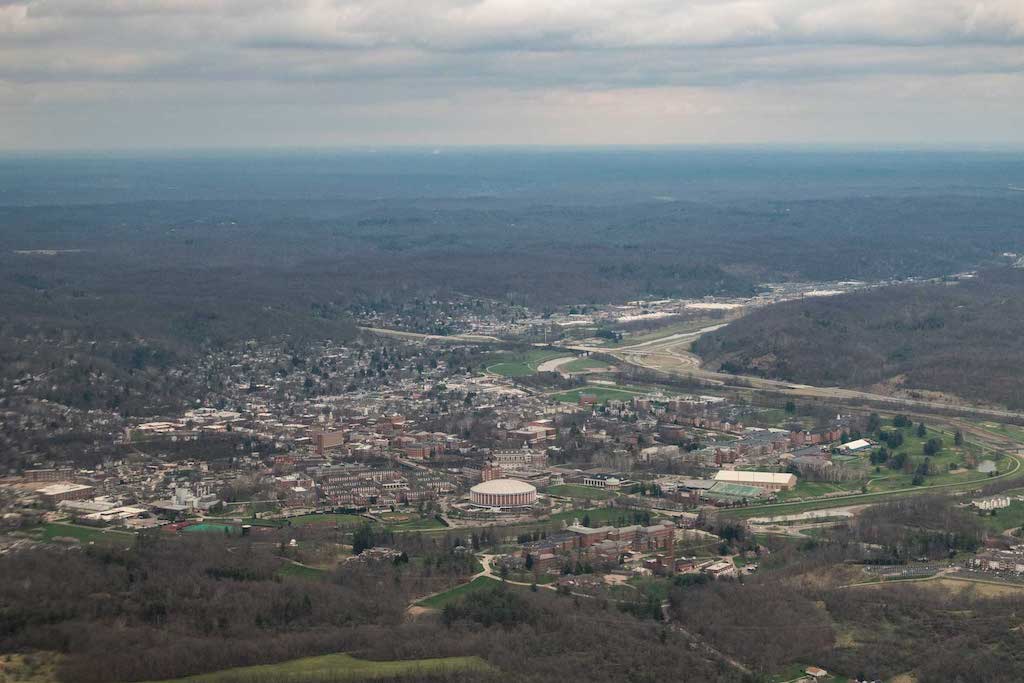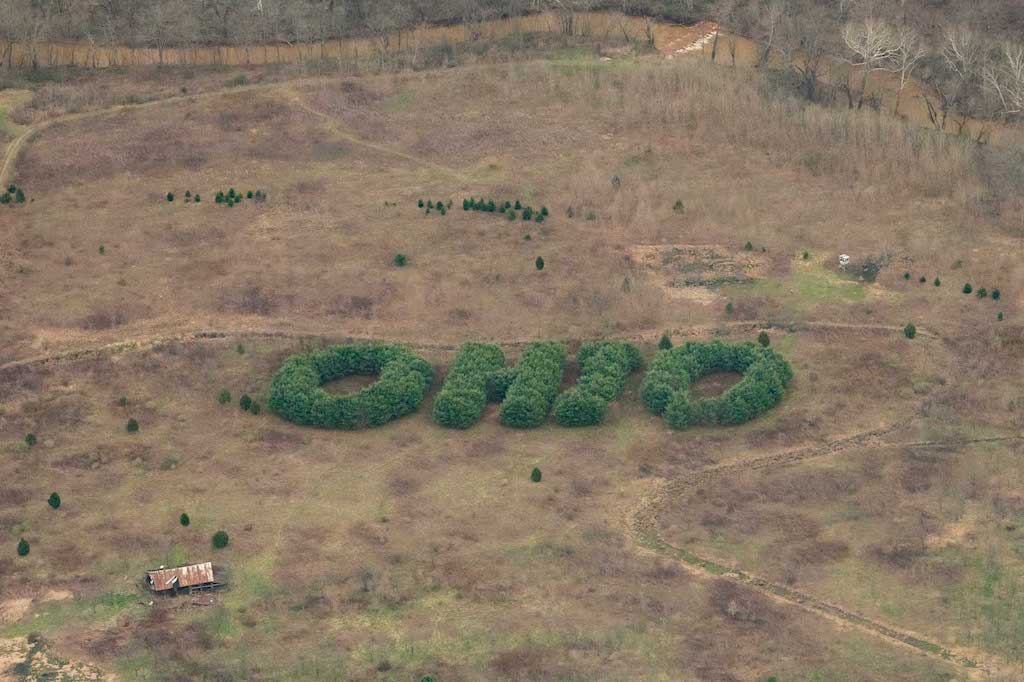The history of Ohio is incredibly vast and complex. Millions of people have passed through this area and left their own unique mark on the landscape, changing the state forever. The timeline below highlights only a few of the ways the land Ohio rests on has evolved to be what it is now.
The Native Americans known as "Mound Builders" were some of the earliest groups to leave an impact on Ohio. While there were nomadic tribes that would hunt great sloths and woolly mammoths in this region long before the Mound Builders, these nomadic tribes did not change the landscape in the same way. The term Mound Builders is a blanket term to refer to the three prominent Native tribes that lived in this area; the Adena, the Hopewell, and the Monongahela. These tribes constructed massive structures of earth, and while there have been speculations as to what these mounds were used for, without any written or oral history it is hard to be certain. The shapes vary greatly with everything from large conical structures to towering walls of earth more than 15 feet high and hundreds of feet long forming massive geometric shapes in the landscape.
Through excavation of these mounds, a wide variety of objects have been found. Some house human remains and are believed to be burial grounds. Others hold objects from all over North America including obsidian, shark teeth, and copper. While no one knows the true reason behind the structures, it is clear they were important to the people who once called this area home. Descendants of Natives still live in southeastern Ohio, but almost no organized Native tribes remain. Groups of settlers and Europeans began to invade the area leading to warfare that forced most Natives to leave.
One of the first reasons Europeans came to Ohio was for the fur trapping industry. Primarily trapping beavers, these trappers would ship their valuable pelts back to Europe or trade with others in the area, capitalizing on the Ohio wilderness filled with animals. Many trappers also served as some of the first trail blazers in the area. Trappers were some of the first groups of non-Native people in the area and would go deep into the wildness and create structured paths along preexisting Native American trails that eventually opened the area for others to utilize the land.
Lead by Rufus Putnam, a general in the revolutionary war, The Ohio Company of Associates in the Northwest Territory traveled the winding Ohio River into unexplored territory to establish the southeastern town of Marietta, the first permeant settlement north and west of the Ohio River. Marietta soon became a landing point for many new travelers in the area and provided an important hub for trade and industry. Enticed by the promise of new land and possibilities, The Ohio Company and other settlers spread from Marietta further into the unknown territory.
After the Revolutionary War, settlers moved to Ohio in droves. As payment for fighting in the war, some soldiers from the Virginia and Maryland militias were allotted plots of land, known as land grants, as payment for their war efforts. This gave many the incentive to stay and begin to build up communities in the area. At the same time, refugees from the Revolutionary War moved into the area. People from all over the eastern and southern settlements, and a wide swath of Europeans, also came with hopes of starting a new life in what was then considered the new frontier of America. With them, they brought their own unique customs and traditions that would lead to the mix of cultures in the area, and throughout the United States.
With the growing number of settlers coming to explore the new territory, it was clear a national road was needed. Ebenezer Zane, a pioneer and soldier in the area, petitioned congress to begin the first federally funded road in the territory. Beginning about halfway up what would later become the eastern border of Ohio, Zane followed old Native American and animal trails, blazing his way down to the soon-to-be northeastern border of Ohio. Zane’s Trace greatly opened the area to a new wave of pioneers and provided a path into the unknown. As payment, Zane received land on the Muskingum, Hocking, and Scioto rivers where he established new towns and set up ferries to cross the river for a cost. One of the towns, Zanesville, still bears his name.
Soon after the town of Marietta was settled, a small settlement known as Athens emerged. Pioneers entered the area in 1797, but the town did not officially become a county seat until 1805 and grew from there. Once it became a city, Athens served as another jumping off point for people interested in the adventure of the new frontier. The town and surrounding land offered many possibilities like the ability to plant and grow crops for people to support themselves. It also led to a variety of industries including coal, timber, farming, and clay.
One of the biggest changes to the southeastern Ohio landscape was the establishment of Ohio University. As the oldest university in Ohio, it has drawn attention to Athens for centuries and has brought people from all over the world. The university started small, with only three students and one professor, but has grown immensely over time. Together, the town and university provide a place for all types of people to interact and share their ideas and cultures.
Before any railroads or interstate highways were established in Ohio, canal systems connected counties across the state. The canal system began with the Ohio-Erie Canal and ran from northern Ohio all the way to the state’s southern border. The canal system quickly expanded and had many offshoots and port cities along its path, but Athens was not attached to the system until 1836 when the Hocking Canal was constructed. Crucial to the development of industry in Ohio, the canal system helped farmers and industry workers to move massive amounts of crops and goods to areas all over Ohio and its surrounding states. The canal boats were dragged by horses that would slowly walk along the banks of the canal, travelling at about 3 miles per hour. Much of the canal system today is dilapidated and has been taken over by nature, but the ditches left behind, and remnants of canal locks, can still be seen in a few areas across the state.
While the canal system provided cheap and easy transport, the slow speed made it difficult to ship goods long distances before they expired. To solve this issue, large expanses of railroad tracks were introduced across the state. The first railroad built in Ohio was the Erie & Kalamazoo connecting Toledo, Ohio to Adrian, Michigan. Soon afterward, the Baltimore & Ohio (B&O) railroad system was built. The B&O stop in Athens was originally a part of the Marietta & Cincinnati Railroad but was later absorbed by the B&O line. This system furthered the reaches of industry in the area greatly. By the time of the Civil War, the state was covered in railroad tracks winding across the landscape.
Present-day southeastern Ohio is home to a wide variety of cultures and lifestyles. Millions of people have moved through this area and brought their own unique cultures and ideas. People from all over the world come to Athens to attend Ohio University while others, whose family has lived in this area for generations, carry on traditions passed down for decades. Many tend to view this area as a homogenous region of poverty and farmers, and while poverty still holds a grip on the area, there is a thriving and diverse community of resilient people working to better the communities around them.


Talcon Quinn, a local artist and craftsperson has learned through years of training how to utilize the resources around her in a way that may not occur to most.
Read MoreRick Vest, a semi-retired farmer, has been trapping in this area for years and his developed an eye for things that are often too minute for many to notice.
Read More18,000 years ago, glaciers reshaped the Ohio landscape. These colossal walls of ice moved painstakingly slowly, flattening everything in their path. At the base of the ice lay a mountain of land that grew with every inch it moved.
Read More